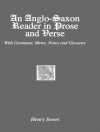A Passage to India is a 1924 novel by English author E. M. Forster set against the backdrop of the British Raj and the Indian independence movement in the 1920s. A Passage to India, novel by E.M. Forster published in 1924 and considered one of the author’s finest works. The novel examines racism and colonialism as well as a theme Forster developed in many earlier works, namely, the need to maintain both ties to the earth and a cerebral life of the imagination. A Passage to India, novel by E.M. Forster published in 1924 and considered one of the author’s finest works. The novel examines racism and colonialism as well as a theme Forster developed in many earlier works, namely, the need to maintain both ties to the earth and a cerebral life of the imagination.
E. M. Forster
A Passage to India [EPUB ebook]
A Passage to India [EPUB ebook]
قم بشراء هذا الكتاب الإلكتروني واحصل على كتاب آخر مجانًا!
لغة الإنجليزية ● شكل EPUB ● ISBN 9789354622885 ● حجم الملف 0.7 MB ● الناشر True Sign Publishing House ● نشرت 2023 ● للتحميل 24 الشهور ● دقة EUR ● هوية شخصية 9024251 ● حماية النسخ Adobe DRM
يتطلب قارئ الكتاب الاليكتروني قادرة DRM












